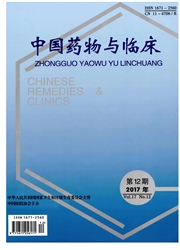

 中文摘要:
中文摘要:
目的 验证多口径加权算法,明确其在现场流行病学调查中的应用价值。方法 采用非线性多口径加权算法对山西省农村社区人群骨关节炎调查数据进行统计分析,在验证方法的基础上进一步得到山西农村社区人群骨关节炎患病情况的估计值。结果 分别使用普通权数和口径权数对各不同抽样量分组的人数进行估计,结果显示多口径加权算法的估计值明显优于普通算法。采用多口径加权算法的山西省农村社区人群骨关节炎患病率估计值约为28%。结论 多口径加权算法在估计患病人数的准确度上要明显高于普通加权方法,说明多口径加权算法在已知总体结构的横断面调查数据处理中具有较强的有效性和应用价值。
 英文摘要:
英文摘要:
Objective To verify the practical value of the nonlinear calibration weighting algorithm in the epidemiological survey. Methods The program test of nonlinear calibration weighting was realized with software, to verify the practicability and application prospect of the method with the epidemiological survey data of osteoarthritis in Shanxi Province. Results The error value generated by nonlinear calibration weighting was much smaller than that generated by common weighting. The study indicated that the correction on samples by nonlinear calibration weighting was much better than common methods. The prevalence of osteoarthritis in rural areas of Shanxi Province, which was evaluated by the nonlinear calibration weighting, was about 28%. Conclusion Nonlinear calibration weighting can better improve the sample structure, with good application value in the epidemiological survey of symptomatic osteoarthritis and other surveys with known population distribution.
 同期刊论文项目
同期刊论文项目
 同项目期刊论文
同项目期刊论文
 期刊信息
期刊信息
